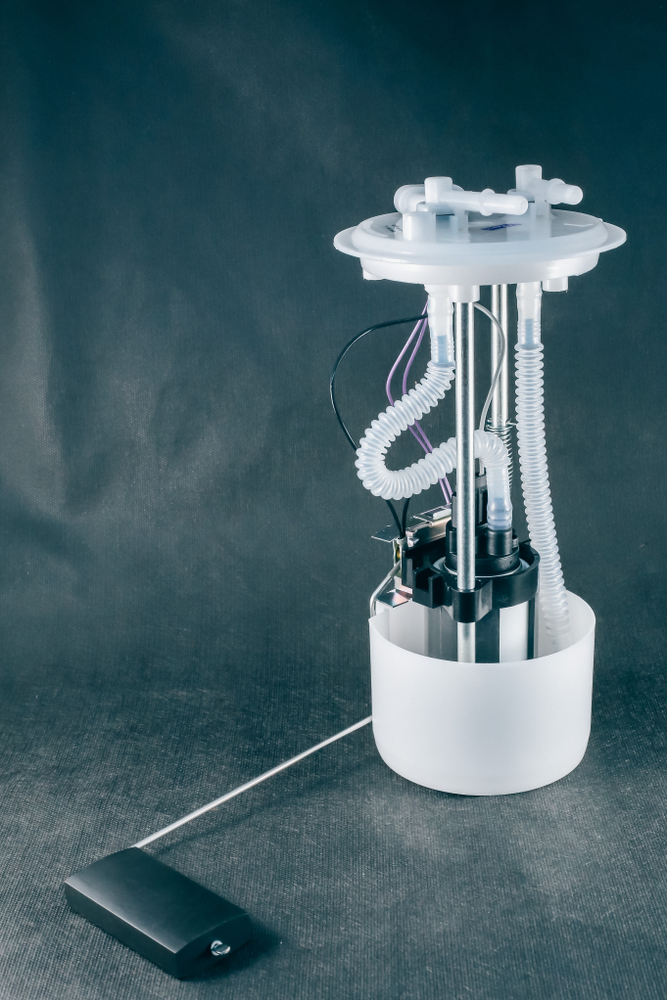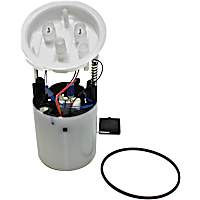It’s a frigid winter morning and you go to start your car—it cranks and cranks but doesn’t fire. Sound familiar? Then you may have a bad fuel pump.
But don’t worry, you’re not alone. I’ve been in your shoes on more than one occasion. My most recent bout with a bad fuel pump involved my old Ford F-150. The pickup had been running great, despite having a quarter of a million miles on the odometer. Then, one day, it cranked but would not start.
I had the truck towed home and, through some simple diagnostics, determined it had a bad fuel pump. For a couple of hundred dollars, I replaced the pump and my truck was running great shortly after.
A fuel pump can cause a no-start condition, as I experienced. And it can cause other problems as well.

What are the signs of a bad fuel pump?
Obviously, because your car needs an ample supply of fuel to run right, a faulty fuel pump can cause a number of problems. I’ve found some of the most common signs to be:
Engine won’t start
Your engine won’t run without fuel. So, if your fuel pump isn’t delivering enough fuel, or developing enough pressure, the engine may crank but not start.
Difficulty starting
In some cases, a worn fuel pump will make the car hard to start, rather than preventing it from starting altogether. A faulty check valve within the fuel pump can also cause hard starting, as can the built-in pressure regulator in a returnless fuel system.

Stalling
An engine that is starved for fuel may stall—often at the most inopportune times.
Poor performance
A weak fuel pump can cause engine performance problems such as lack of power, misfiring, and surging.
Check engine light
A weak fuel pump may throw off your car’s air/fuel ratio, causing the engine control module (ECM) to turn on the check engine light. In some cases, pump electrical issues may trigger the light as well.
Abnormal noise
All fuel pumps make a slight humming noise while working. But if instead of a soft hum, your pump is making a loud whining noise, you may have problems.
What causes a fuel pump to go bad?
Overheating by consistently driving with very low fuel
You know how you like to tempt fate by driving around with your fuel gauge reading empty? That’s exactly the type of behavior that will kill your fuel pump prematurely. The reason being is that the pump has to work harder to pull fuel from the tank when the level is low.
Eventually, the overworked pump will overheat, leading to its early demise.
Restricted fuel filter
Some cars have an external fuel filter. If your fuel filter becomes clogged or needs to be replaced, the pump will have a harder time pushing fuel through.
Dirt and debris
Even though the pump has a strainer, smaller particles can make their way through, causing damage. So, if you’ve replaced your fuel pump recently, and you didn’t clean the tank before installing the replacement, the dirt and debris that have accumulated at the bottom of your gas tank can actually cause damage to the new fuel pump.
Water contamination
Water contamination can also lead to rust and corrosion that damages the fuel pump. Often, the moisture accumulates after the vehicle has been sitting unused for an extended period of time.
Normal wear and tear
Of course, fuel pumps don’t always fail due to outside forces, such as running the fuel tank low and contamination. It’s also very common for a fuel pump to simply wear out over time.
What does a fuel pump do?
The fuel pump, as you probably guessed, pumps fuel from your car’s gas tank to the engine’s fuel injectors. Electric pumps employ a small motor that turns a rotary device to pull in and distribute fuel. Plus, there’s a built-in check valve that maintains pressure when the engine is off.
Modern pumps are integrated into an assembly (sometimes called a module) that also contains the fuel level sending unit, which sends a signal to the gas gauge, and a filter screen. The pressure regulator and other components may be built-in as well. You’ll find the assembly located in the gas tank.

Exactly how the fuel pump operates depends on whether the vehicle has a continuous or returnless fuel system. Continuous systems are found in older fuel-injected cars, whereas most late-model vehicles employ a returnless design.
In a continuous system, fuel is sent from the in-tank fuel pump, through a supply line to the fuel injectors. Along the way, the fuel passes through a filter (mounted in the line), before entering a pressure regulator located at the fuel rail. The regulator maintains pressure by bleeding off excess fuel through a return line to the tank.
Meanwhile, a returnless fuel system has no return line because, well, one isn’t needed. Some designs meter excess fuel back into the tank via a pressure regulator built into the pump assembly. The more modern approach, though, uses a separate fuel pump control module (FPCM) to modulate fuel pump speed. In most cases, continuous systems do not have an externally-mounted fuel filter.

Continuous and returnless designs have distinct control systems as well. Typically, in a continuous system, the engine control module (ECM) controls the fuel pump via a relay. The ECM switches on the relay when the driver turns the ignition key. An inertia cut off switch or oil pressure switch may be wired into the control circuit as well.
In most contemporary returnless systems, however, the FPCM directly controls the fuel pump. The device uses information from sensors, such as the fuel pressure sensor and fuel temperature sensor, to determine control of the pump’s ground circuit and vary the pump’s speed.
What to do if you think you have a bad fuel pump?
If you’re like me, a few swear words will be your initial response to potential fuel pump issues. But after you’ve gotten that out of your system, you can start laying out your plan of attack.
First and foremost, don’t jump to conclusions—perform a thorough diagnosis to ensure the fuel pump is faulty. Or have a professional carry out the diagnostics for you. Because there are a lot of other problems that can mimic a faulty pump, you want a solid assessment before jumping in and replacing the fuel pump without knowing all the facts.
Getting a New Fuel Pump for Your Vehicle
A bad fuel pump can cause your vehicle’s engine to stall, which can be quite inconvenient. Fortunately, getting a replacement fuel pump is easy and convenient here at CarParts.com.
CarParts.com helps you eliminate the hassle of purchasing a replacement fuel pump, thanks to our wide range of parts and an easy-to-use interface. You should be able to find a suitable replacement that fits and performs like the original part. Simply enter your car’s year, make, model, and engine into our vehicle selector and browse through our available parts. You can trust the quality of our selection of fuel pumps since they are sourced from the industry’s leading manufacturers.
What are you waiting for? Shop for fuel pumps at CarParts.com now.
Products Mentioned in this Guide
Any information provided on this Website is for informational purposes only and is not intended to replace consultation with a professional mechanic. The accuracy and timeliness of the information may change from the time of publication.


 Fuel Filter
Fuel Filter
 Fuel Pump
Fuel Pump















